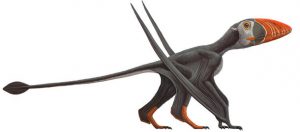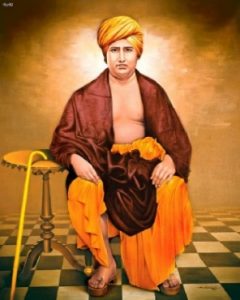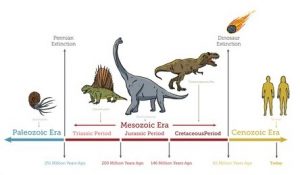Table of Contents
THE INDIAN HISTORY
1.THE BIRTH ANNIVERSARY OF SWAMI DAYANAND SARASWATI
THE CONTEXT: Every year, this special day is celebrated in all vedic institutions and religious establishments across the country with great pomp and fervour.
THE EXPLANATION:
- He was born on 12 February, 1824, in Gujarat, Saraswati’s original name was Mool Shankar Tiwari. The name Mool was given to him as he was born when the Mool Nakshatra conquered the sky.

- But according to the traditional Hindu calendar, the great Indian philosopher was born on the Dashami tithi of Phalguna Krishna Paksha. This year, Dayanand Saraswati’s birth anniversary is celebrated on 26 February, 2022.
His journey:
Dayanand Saraswati was one of India’s greatest social reformers, leaders and philosophers during the pre-independence era. Dayanand Saraswati was the one who first gave the call for Swaraj in 1876 as ‘India for Indians’. It was a call that was later taken up by Lokmanya Tilak.
Snippets from Dayanand Saraswati’s life:
- More than a religious leader, who left a deep impression on the minds of countrymen. His ideas were more against following empty rituals, denouncing caste system, encouraging education and giving equal rights to men and women.
- He was the one who promoted Vedic philosophy with principles of karma and reincarnation.Saraswati’s mission in life was universal brotherhood. He founded the Arya Samaj that opposed caste system based on birth rather than merit, child marriage, idol worship, untouchability and temple offerings. Factors concerning social reform and education were Swami Dayanand Saraswati’smain focus.
- To understand and realise the vision that Dayanand Saraswati had, the Dayanand Anglo Vedic (DAV) schools came into existence in 1886. In the country, the first DAV School was founded at Lahore and Mahatma Hansraj was appointed as its first Headmaster.
Main principles and objectives of the Arya Samaj are as follows:
- Believes in infallibility of Vedas and takes them as only truth and source of all source all knowledge. Believed that post-vedic texts such as Puranas were responsible for pollution of Vedic religion.
- Opposes the idol-worship and reincarnation theory of God but accepts the doctrine of ‘Karma’ and transmigration of soul. Dayanand also rejected the theory of destiny / fate (Niyati).
- Believes in one God who has no physical existence.
- Rejects Brahmanical dominance of spiritual and social life of Hindus. Denounces claim of Brahmins as intermediaries between man and God.
- Supported Four Varna System but the Varna system should be based on merit not birth. Hindu religion gives everyone an equal place in the spiritual and social life.
- Advocated equal status for women in the society. There is no room for any kind of discrimination against women on the basis of gender.
- Advocated widow remarriage, female education and opposed polygamy, child marriage, Sati, etc.
- Backed propagation of Hindi and Sanskrit. Considered good education as base of a good and solid social system. It did phenomenal work in the field of education even for women.
- Denounces socio-religious evils such as animal sacrifices, religious pilgrimages, feeding the dead through sraddhas, magic and charms etc. According to Swami Dayanand, these evils exist in the society due to ignorance of the teaching of the Vedas.
- Shuddhi Movement: Shuddhi provided for the reconversion of such persons to Hinduism. This movement was primarily directed against the Christian missionaries, who had converted a large number of Hindus, particularly from the depressed classes to Christianity.
- Protection of the cow: In 1882 the Arya Samaj formed a ‘Cow Protection Association’. However, this antagonized the Muslim theologists and resulted in serious Hindu Muslim riots.
THE INTERNATIONAL RELATIONS
2. INDIA’S ABSTENTION ON UNSC
THE CONTEXT: Amid tensions between Russia and Ukraine, India abstained on a US-sponsored UN Security Council resolution that “deplores in the strongest terms” Russia’s “aggression” against Ukraine.
THE EXPLANATION:
India’s decision to abstain from the UNSC resolution on Ukraine strikes a balance between national interest and its core belief. The tough resolution was expectedly vetoed by Russia, 11 countries supported it with India, UAE and China choosing to abstain from the vote.
Who moved the resolution?
- The UN Security Council voted on the draft resolution presented by the US and Albania, and co-sponsored by several other nations, including Australia, Estonia, Finland, Georgia, Germany, Italy, Liechtenstein, Lithuania, Luxembourg, New Zealand, Norway, Poland, Romania and the United Kingdom.
What was the resolution about?
- The Council’s resolution reaffirmed its commitment to the sovereignty, independence, unity and territorial integrity of Ukraine within its internationally recognised borders.
- The resolution “deplores in the strongest terms Russia’s aggression against Ukraine” and decides that Russia “shall immediately cease its use of force against Ukraine and shall refrain from any further unlawful threat or use of force against any UN member state”.
Why did India abstain?
India did not endorse the harsh language used in the resolution condemning Russia’s actions. It wants to maintain a balance between the Western bloc led by the US, and Russia, since it has strategic partners on both sides.
| NOTE:
· India took over from France to assume the presidency of the United Nations Security Council (UNSC) for the month of August. · This is the first presidency for India during its 2021-22 tenure as a non-permanent member of the UNSC. · India is organising three high-level meetings focusing on its priority areas–maritime security, peacekeeping, and counter-terrorism. · India will work as a voice of moderation, an advocate of dialogue and a proponent of international law. |

THE PT PERSPECTIVE
3. TWO NEW PREHISTORIC BIRD SPECIES IDENTIFIED IN CHINA
THE CONTEXT: Paleontologists at the Changma locality in China’s Gansu province have found six specimens from three species of ornithuromorph birds — two of which are new to science.
THE EXPLANATION:
- It’s the second-richest Mesozoic fossil bird site in the world, but more than half of the fossils found there belong to Gansusyumenensis, a species of aquatic bird that lived approximately 120 million years ago (Early Cretaceous epoch).
- “Gansusyumenensis is the first known true Mesozoic bird in the world, as Archaeopteryx is more dinosaur-like, and now we know what its skull looks like after about four decades”.
- The new six specimens from the Changma site are primarily just skulls and necks, parts not preserved in known specimens of Gansusyumenensis.
- The fossils were also somewhat smashed by their time deep in the Earth, which made analyzing them difficult.
- According to the paleontologist, these fossils come from a site in China that has produced fossils of birds that are pretty darned close to modern birds, but all the bird fossils described thus far haven’t had skulls preserved with the bodies.”
- “These new skull specimens help fill in that gap in our knowledge of the birds from this site and of bird evolution as a whole.”
- The two other specimens are considered new species: Meemannavisductrix and Brevidentaviszhangi.
- Like Gansusyumenensis, both Meemannavisductrix and Brevidentaviszhangi are ornithuromorph birds — the group that contains modern birds.

4. NEW SPECIES OF LARGE-SIZED PTEROSAUR UNEARTHED IN SCOTLAND
THE CONTEXT: A fossil of a huge flying reptile known as pterosaur from the Jurassic period has been discovered on the Isle of Skye in Scotland.
THE EXPLANATION:
According to the University of Edinburgh, the giant winged creature with an estimated wingspan of more than 2.5 metres lived around 170 million years ago.
The creature has been named Dearcsgiathanach, meaning ‘winged reptile’ in Scottish Gaelic.
The spectacular fossil was discovered by scientist, spotted its jaw protruding from the limestone layer on a tidal platform. It was extracted after strenuous efforts and later investigated. CT scan of the skull showed that Dearc had large optic lobes suggesting good eyesight.
Pterosaurs were the first vertebrates to gain flying ability, even 50 million years before birds. The discovery of Dearc has confirmed that pterosaurs grew to the size of fighter jets, just before the extinction of dinosaurs 66 million years ago. Meanwhile, they were earlier believed to be smaller during the Jurassic period.
What are a Pterosaurs?
Neither birds nor bats, pterosaurs were reptiles, close cousins of dinosaurs who evolved on a separate branch of the reptile family tree. They were also the first animals after insects to evolve powered flight—not just leaping or gliding, but flapping their wings to generate lift and travel through the air. They evolved into dozens of species.
5. RAILWAYS’ SOLAR POWER PLANT IN MP SHORTLISTED FOR INTERNATIONAL AWARD
THE CONTEXT: The Indian Railways’ solar power plant set up near Bina station in Sagar district of Madhya Pradesh has been shortlisted for an international award.
THE EXPLANATION:
- Bharat Heavy Electricals Ltd (BHEL) has successfully commissioned a 1.7-megawatt solar photovoltaic plant at Bina in Madhya Pradesh for the Indian Railways. The plant directly feed power to traction systems of Indian Railways.
- The move to create a solar plant was taken after Indian Railways decided to be self-reliant for its energy needs and solarise railway stations by utilizing its vacant lands for Renewable Energy (RE) projects. The Ministry of Railways has decided to install solar power plants on its vacant unused lands on mega scale.
- On this light, the International Union of Railways recently shortlisted this green initiative of the Indian Railways for an award in ‘Best Use of Zero-Carbon Technology Category’, adding that the other two which are in the race to win this award are railways of east Japan and South America.
- “The solar power plant having an installed capacity of 1.7 megawatt has been operating since the last one-and-a-half years, supplying electricity directly to the traction system used to run trains”.
- Indian Railways present demand would be fulfilled by the solar projects being deployed, making it the first transport organisation to be energy self-sufficient. This would help in making Indian Railways green as well as ‘AtmaNirbhar’.
- It has started energy procurement from various solar projects like 3 MWp solar plant set up at MCF Raebareilly (UP). About 100 MWp rooftop solar systems have already been commissioned on various stations and buildings of Indian Railways.
THE MISCELLANEOUS
6. 12TH ANNUAL AEGIS GRAHAM BELL AWARDS
THE CONTEXT: Centre for Development of Telematics (C-DOT), the premier Telecom R&D centre of the Government of India has bagged three awards at 12th Annual Aegis Graham Bell Awards in a virtual ceremony on 25th Feb 2022 for its indigenously designed & developed innovative Telecom solutions in various categories.
THE EXPLANATION:
CDOT is declared TOP WINNER in three categories as below
- Indigenous Early Warning Platform for Disaster Management & Preparedness based on ITU’s Common Alerting Protocol (CAP) in the “Tech for Social Good” category.
- 2. C-DOT SAMVAD – A Unified Platform for Secure Messaging and Calling Solution.
- C-DOT Quarantine Alert System (CQAS) has won the first prize in the category of “Preventive measures to combat Covid 19”.
About Centre for Development of Telematics (C-DOT)
- It was established in 1984 as an autonomous Telecom R&D centre under the Department of telecommunication (DoT), Government of India.
- Also,it is a registered society under the Societies Registration Act,1860.
- It is a registered public-funded research institution with the Department of Scientific and Industrial Research (DSIR), Government of India.
- Currently, C-DOT is working towards realising the objective of various flagship programmes of Govt. of India which include Digital India, BharatNet, Smart Cities etc.
THE PRELIMS PRACTICE QUESTIONS
QUESTION OF THE DAY 26th FEBRUARY 2022
Q. Which of the following statements is incorrect about Arya Samaj?
a) It opposes the idol-worship and reincarnation theory of God.
b) It rejects the doctrine of ‘Karma’ and transmigration of soul.
c) It rejects Brahmanical dominance of spiritual and social life of Hindus.
d) It advocated widow remarriage and female education.
ANSWER FOR 25th FEBRUARY 2022
Answer: B
Explanation:
Chhau Dance:
- The word ‘Chhau’ probably comes from chhauni (camp), and the art form was arguablyinvented to keep foot soldiers war-ready.
- The martial movements and mock fights subsequently took the shape of dance, becomingpopular in the Chota Nagpur Plateau region.
- Apart from Purulia Chhau, there are two other variants, Mayurbhanj and SeraikellaChhau,which are practised in Odisha and Jharkhand respectively.
- The mask is the defining feature of Purulia Chhau, differentiating it from its two otherbranches. Though SeraikellaChhau does use masks, they are simpler, with none of the pomp of these.
- With stories taken from the Ramayana, Mahabharata and the Puranas, the dance dramascelebrate the triumph of good over evil. In these pandemic times, Chhau has even beenused to spread awareness about COVID-19.
- These days, Chhau festivals are held throughout the year and dancers are called to perform on national and international stages.



